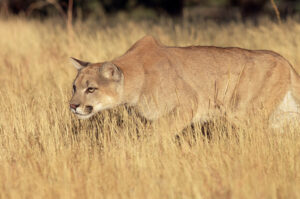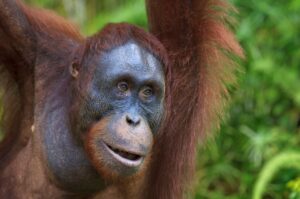A passion for the natural world drives many of our adventures. And when we’re not actually outside, we love delving into the discoveries about the places where we live and travel. Here are some of the best natural history links we’ve found this week.
Rain to replace snow in the Arctic: Snow ha long been the most common form of precipitation in the Arctic. Researchers believe that by 2060, rain will become the most common. The previous estimate for this was 2090, but new climate models have brought the date forward. The implications of this rapid warming will be profound. “You might think the Arctic is far removed from your day-to-day life, but in fact temperatures there have warmed up so much that it will have an impact further south,” said lead researcher Michelle McCrystall. These Arctic changes increase extreme weather events in Europe, Asia, and North America.
Each tentacle has a mind of its own
Scientists astonished by octopus brain: Octopuses are one of the smartest animals on earth, but the anatomy that allows this is quite unique. Their mind is spread throughout their body. All eight tentacles contain neurons that are sensitive to touch, smell, and taste. Each tentacle seems to have a mind all its own. Scientists have studied the brains of multiple species of octopus to try and figure out how their intelligence has developed. They do so in a way similar to vertebrates: by the need to adapt to their surroundings. The number of folds in the brain of the octopuses surprised scientists. Their evolved brains can process large quantities of information. This allows the animals to remember landmarks and even break out of their housing tanks. “This is the nightmare for most octopus researchers,” said Dr. Wen-Sung Chung of the Queensland Brain Institute.

A common octopus. Photo: Shutterstock
Playing recordings of healthy oceans helps restore marine ecosystems: Back-to-back cyclones in 2014 and 2015 wrecked huge sections of the Great Barrier Reef in Australia. In 2017, scientists used coral rubble to build new mini-reefs in hope of restoring the area. They placed two speakers near these mini-reefs and played recordings of the noises made when the reefs were healthy. Double the number of young fish settled on the reefs near the speakers. This suggests that sound might help rebuild marine ecosystems. “The acoustic world underwater is critical for the survival of most animals,” said Stephan Simpson of the University of Bristol.
Strangely positioned mummy
1,200-year-old mummy unearthed in Peru: Archaeologists have discovered an 800- to 1,200-year-old mummy in Cajamarquilla, 24km east of Lima. The body is of a male aged 18 to 22. It lay in a burial chamber 1.4 metres wide and three metres long. The discovery is very peculiar because rope binds the body and the hands cover the face. The tomb also contained the skeletons of a guinea pig and a dog and traces of corn and vegetables.

The mummy discovered at the Cajamarquilla archaeological site in Peru. Photo: Cris Bouroncle/AFP
Houses choke elephant sanctuary
Ethiopian elephants under threat: Between 2006 to 2017, the number of houses within the Babile Elephant Sanctuary in Ethiopia soared from 18,000 to over 50,000. The roaming area of the elephants overlaps with 32,000 of the houses. The sanctuary is home to one of six recognized populations of African savannah elephants in Ethiopia. The growing human population has caused land shortages and a huge demand for natural resources in the area. Unless poverty issues in the area are addressed, the population of elephants will decline and the sanctuary will disappear.
Microbial mats and the origins of oxygen
Is Lake Huron the key to the origin of life?: Oxygen is essential for all life on earth, but why oxygen levels began to rise 2.4 billion years ago is a mystery. Scientists are now exploring deep sinkholes in Lake Huron to try and solve the conundrum. The sinkholes are home to microbial mats of cyanobacteria. These exist in just a few places on earth, in conditions that are free of oxygen. “These microbial mats…are representative of the types of organisms that would have lived billions of years ago and played a really important role in Earth’s oxygenation,” said scientist Gregory Dick. Billions of years ago, the mats started producing oxygen, but no one knows why. Researchers are monitoring the microbial mats with microsensors and cameras to determine when oxygen production starts. This will hopefully give clues to what triggered the appearance of oxygen on Earth.

Lake Huron. Photo: Shutterstock
Fossil remains of herd of 11 dinosaurs discovered in Italy: Palaeontologists discovered the fossils of 11 dinosaurs in Villaggio del Pescatore, a former limestone quarry in Italy. The discovery includes the largest and most complete dinosaur fossil ever found in the country. All 11 dinosaurs belong to the species Tethyshadros insularis, which lived 80 million years ago. They also found remains of fish, shrimp, crocodiles, and flying reptiles. “This is super cool as we can figure out the kind of environment the dinosaurs lived and died in,” said Federico Fanti of the University of Bologna.





